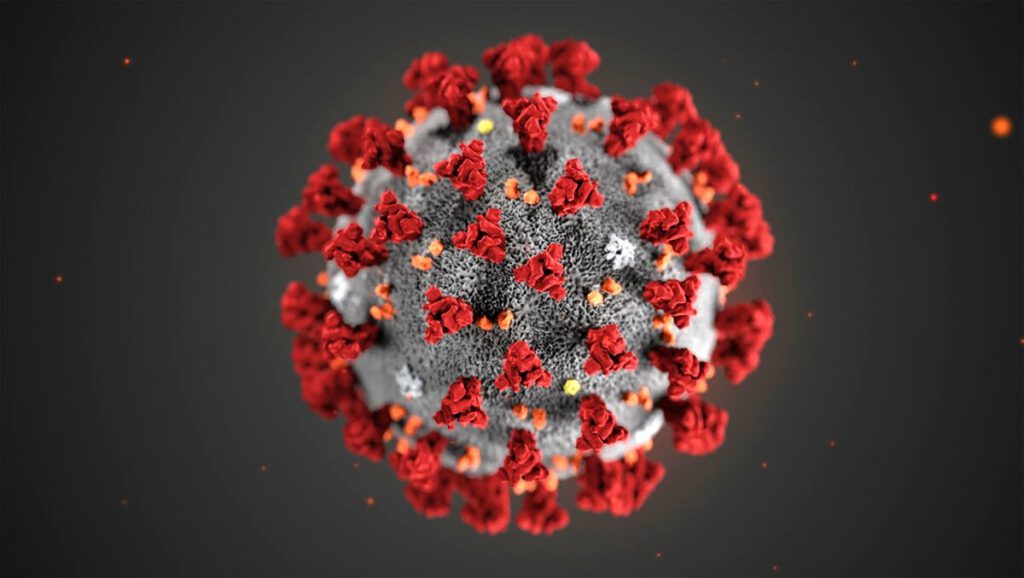New COVID-19 Variants Behind Spiking Cases
Variants now account for more than half of all new cases of COVID-19.
Variant strains of the coronavirus now account for more than half of new cases of COVID-19, and the average number of new infections each day has doubled in the last month, state health officials said Thursday.
And while a 4-3 majority of the Wisconsin Supreme Court ended the statewide mask mandate a week ago, the public health prescription is to act like it’s still in effect.
The number of new confirmed cases of COVID 19 in a day topped 1,000 for the first time in nearly two months on Thursday, according to DHS. The seven-day average of cases reached 733 on Thursday — compared with 380 the week of March 10, according to Ryan Westergaard, chief medical officer in the Bureau of Communicable Diseases at DHS.
Deaths and hospitalizations are up much less dramatically, but Van Dijk observed that those are lagging indicators of the pandemic
Emerging variants in the virus, led by one first encountered in England and known as B.1.1.7, appear to account for more than half of the new infections. “I expect that in the next few weeks, if not already, B.1.1.7 will be the predominant strain in Wisconsin,” Westergaard said. “The trend is very clearly in that direction everywhere.”
“The risk then is that these more dangerous strains of the virus can spread throughout the population, and eventually become the predominant strain that’s going around in the community,” Westergaard said. “And then we’re left with an epidemic that is more difficult to control than the one we had several months ago. Unfortunately, this is exactly what we’re experiencing.”
Thursday DHS began displaying more detailed information on virus variants in the state on a web page it has dedicated to tracking the variants’ spread. About 5-10% of the positive tests for the virus are analyzed more closely to detect variants.
Vaccines haven’t yet been approved for children, and might not be for several months, but children appear to be more susceptible to some of the variants.
“A greater proportion of the cases that we’re seeing this month compared to previous months are children under 18,” Westergaard said. There have been racial and ethnic disparities in who gets the virus, he added — especially in severe forms of the disease.
On the plus side, more than one in three Wisconsin residents have now had at least one vaccination for COVID-19, including more than three out of every four people 65 or older, said Van Dijk. Among that age group, more than 65% have completed their vaccination, which for most requires a two-shot series.
In all, 1.3 million Wisconsin residents have gotten a complete vaccine — either two shots of Pfizer or Moderna inoculations, or a single Johnson & Johnson shot, Van Dijk said. But vaccines alone aren’t yet sufficiently widespread to curb the virus by themselves.
“Let’s be frank — we know people have pandemic fatigue and are ready to be done with this,” Van Dijk said. “But let’s also be frank — that we don’t want to be done with this with hundreds and hundreds more of our friends and family having lost their lives if we fail to keep at it for a bit more time.”
Wisconsin “is racing against the variants with the vaccine” — and that means, she added, besides continuing to mask, avoid crowds and maintain physical distance with others, people need to get vaccinated and encourage friends and family who might be hesitant to get vaccinated as well. “How we can all support each other in getting our vaccine, because our vaccine is what will help us start to tamp down the variants.”
Westergaard urged caution before relaxing any public health guidelines beyond the guidance from the Centers for Disease Control and Prevention (CDC), which has stated that fully vaccinated people can safely engage in very small, limited indoor gatherings without masks.
Media and public figures can set examples for continuing to observe the needed precautions, Westergaard added: “The more we can spread the word, the more we can engage thought leaders and opinion leaders to make these things normal and respected activities, I think the better off we’ll be.”
“The answer to getting through to the other side of this pandemic is not vaccines or masks,” Van Dijk said. “It’s vaccines and masks.”
Reprinted with permission of Wisconsin Examiner.
More about the Coronavirus Pandemic
- Governors Tony Evers, JB Pritzker, Tim Walz, and Gretchen Whitmer Issue a Joint Statement Concerning Reports that Donald Trump Gave Russian Dictator Putin American COVID-19 Supplies - Gov. Tony Evers - Oct 11th, 2024
- MHD Release: Milwaukee Health Department Launches COVID-19 Wastewater Testing Dashboard - City of Milwaukee Health Department - Jan 23rd, 2024
- Milwaukee County Announces New Policies Related to COVID-19 Pandemic - County Executive David Crowley - May 9th, 2023
- DHS Details End of Emergency COVID-19 Response - Wisconsin Department of Health Services - Apr 26th, 2023
- Milwaukee Health Department Announces Upcoming Changes to COVID-19 Services - City of Milwaukee Health Department - Mar 17th, 2023
- Fitzgerald Applauds Passage of COVID-19 Origin Act - U.S. Rep. Scott Fitzgerald - Mar 10th, 2023
- DHS Expands Free COVID-19 Testing Program - Wisconsin Department of Health Services - Feb 10th, 2023
- MKE County: COVID-19 Hospitalizations Rising - Graham Kilmer - Jan 16th, 2023
- Not Enough Getting Bivalent Booster Shots, State Health Officials Warn - Gaby Vinick - Dec 26th, 2022
- Nearly All Wisconsinites Age 6 Months and Older Now Eligible for Updated COVID-19 Vaccine - Wisconsin Department of Health Services - Dec 15th, 2022
Read more about Coronavirus Pandemic here






















